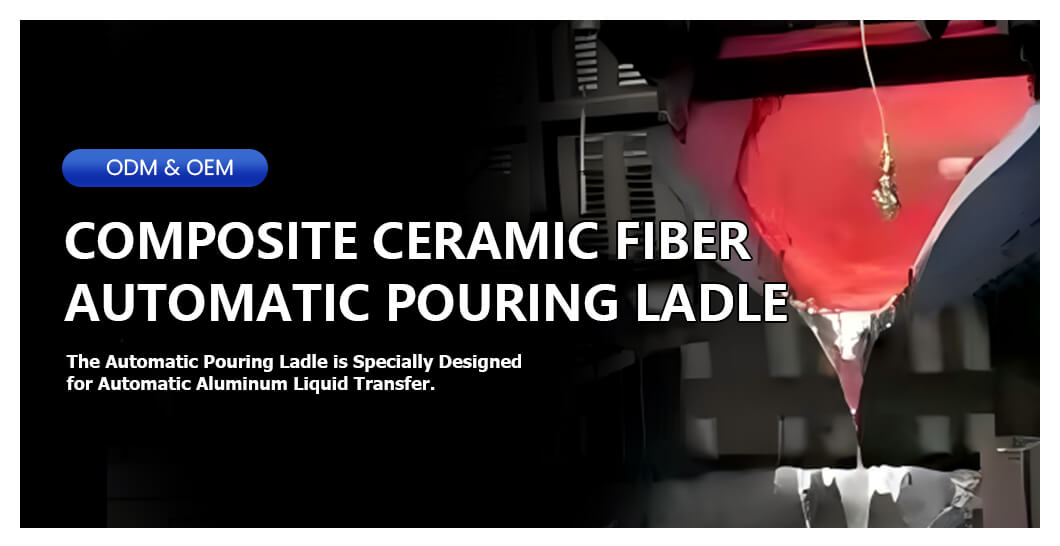On the stage of aluminum alloy casting, the transfer and pouring of molten aluminum are related to efficiency and quality. In the journey of liquid metal from the smelting furnace to the forming mold, every temperature fluctuation and every instant oxidation reaction are challenging the technological limits of modern industry.
Aluminum Liquid Transfer
The moment the molten aluminum leaves the furnace, it starts a race against time. In the traditional foundry workshop, the operator drives a forklift to carry the hot ladle, and the silver light jumping on the surface of the molten aluminum reflects the worker’s face burned by the high temperature. Although this extensive operation method is low-cost, it hides dangers – the generation of oxide slag caused by open transfer, the fluctuation of pouring volume caused by manual operation deviation, and the pollution chain reaction caused by the contact between iron tools and aluminum liquid.
The industry is transforming towards closed and automated. The new transfer system is like a mobile metal shelter: the double-layer insulation shell controls the temperature drop of the aluminum liquid to within 3°C per minute, the inert gas curtain isolates the intrusion of oxygen, and the AGV car equipped with a visual positioning system shuttles accurately along the magnetic track. These changes not only protect the metallurgical purity of the aluminum liquid, but also liberate operators from high-temperature and high-risk environments.
Casting Pouring Process
When the aluminum liquid flows into the mold, physical laws and engineering wisdom begin to intertwine and collide. Gravity casting seems simple, but it requires craftsmen to have an almost intuitive control of metal fluidity; low-pressure casting allows the aluminum liquid to rise steadily like breathing through air pressure regulation, which is particularly suitable for structural parts with strict density requirements; and tilt casting shows unique advantages in the field of thin-walled parts forming through the precise coordination of mold angle and pouring speed.
In this process, the role of pouring tools is crucial. Taking the automatic pouring ladle as an example, the composite ceramic fiber material with boron nitride (BN) coating is used. Its non-stick aluminum property makes it non-cracking and has a longer service life; the traditional cast iron ladle will not only crack due to thermal stress under the repeated flushing of aluminum liquid, but also pollute the metal liquid due to the dissolution of iron elements. The introduction of ceramic matrix composites and boron nitride coatings builds a physical and chemical double barrier between metal and tools, which not only blocks element migration, but also gives tools better thermal shock resistance. Although this type of technological innovation is not obvious, it is the key fulcrum for improving the qualified rate of castings.
Technological Innovation
The evolution of aluminum water treatment technology is essentially a continuous optimization of the three dimensions of “temperature-time-space”. The intelligent transfer system converts heat loss into a computable mathematical model through real-time temperature monitoring and path planning; the adaptive pouring mechanism dynamically adjusts the metal flow rate according to the characteristics of the mold cavity, so that laminar filling changes from ideal to normal.
The only way to sustainable manufacturing
Faced with the industry trend of increasing recycled aluminum usage year by year, the transfer pouring system is undergoing a new adaptive evolution. In view of the characteristics of inclusions in recycled aluminum materials, the combined application of multi-stage filtration nozzles and purification devices enables the purity of molten metal to meet the standards of aviation castings.
In the course of metal changes that have lasted for a hundred years, from simple manual ladles to intelligent pouring units flashing sensor signals, what has changed is the tool form, but what remains unchanged is the unremitting pursuit of perfect molding by industrialists. When the last drop of aluminum liquid solidifies in the mold, it carries not only the product function, but also the devout interpretation of precision manufacturing by generations of engineers.


